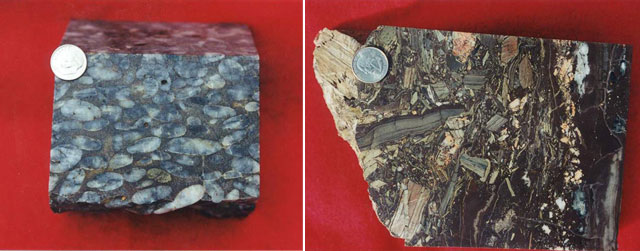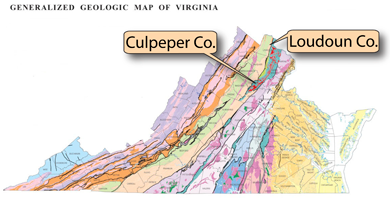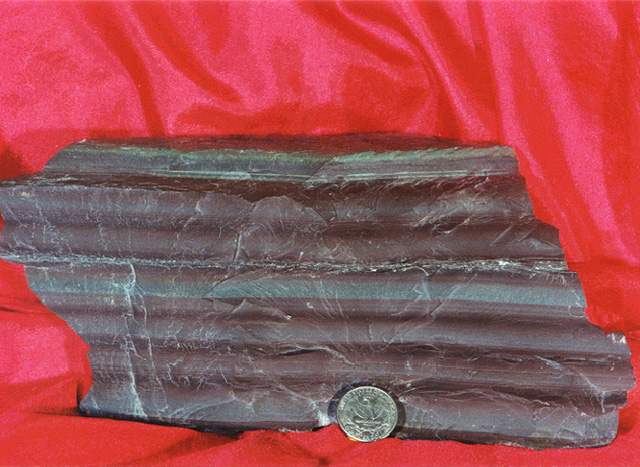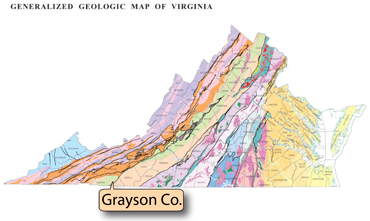
Classification of Sedimentary Rocks (Part 1)
Sedimentary rocks are classified based on their texture and composition. Detrital sediment has a clastic (broken) texture. Chemical and organic sediments have a non-clastic texture, and are classified based solely on their composition.
Clastic Texture
Clastic rocks are named for their grain size and shape.
• Coarse-grained (>2 mm) rocks with rounded grains are called conglomerate. If the coarse-grains are angular, the rocks are called breccia.

Left: conglomerate; right: sedimentary breccia
(Photographs by Stan Johnson)
 Conglomerates (left) are coarse-grained sedimentary rocks with rounded grains. This sample is from Loudoun County. Breccias (right) are coarse-grained sedimentary rocks with angular grains. This sample is from Culpeper County. Note quarters for scale.
Conglomerates (left) are coarse-grained sedimentary rocks with rounded grains. This sample is from Loudoun County. Breccias (right) are coarse-grained sedimentary rocks with angular grains. This sample is from Culpeper County. Note quarters for scale.
• Medium-grained (1/16 mm to 2 mm) rocks are usually called sandstone. Medium-grained rocks can be composed of quartz grains, feldspar grains (arkose), or rock fragments and clay (graywacke).

Sandstone (Photograph by Parvinder Sethi)
Medium-sized grains in clastic sedimentary rocks form sandstone. This sample is a quartz sandstone.
• Fine-grained (<1/16 mm) rocks are generally called mudrocks. They include siltstone and shale.
 Shale from Grayson County (Photograph by Parvinder Sethi)
Shale from Grayson County (Photograph by Parvinder Sethi)
 Fine-grained sediments usually form shale. Shale is a detrital sedimentary rock that splits readily along thin bedding planes. This sample is from Grayson County in the Mount Rogers area.
Fine-grained sediments usually form shale. Shale is a detrital sedimentary rock that splits readily along thin bedding planes. This sample is from Grayson County in the Mount Rogers area.